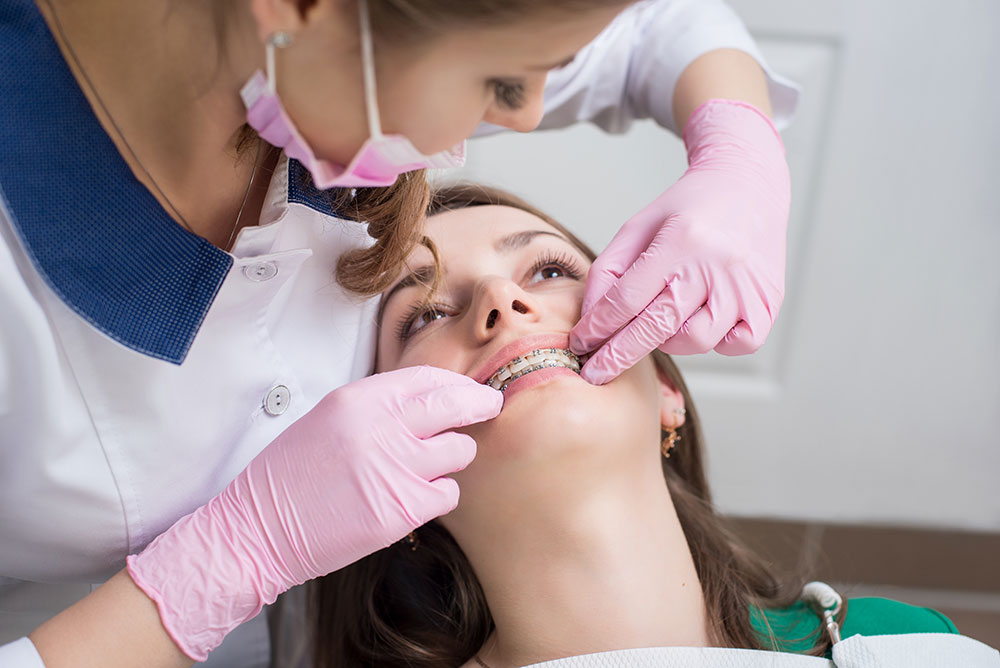The 10-Minute Rule for Legacy Orthodontics
The 10-Minute Rule for Legacy Orthodontics
Blog Article
The Buzz on Legacy Orthodontics
Table of ContentsTop Guidelines Of Legacy OrthodonticsSee This Report on Legacy OrthodonticsA Biased View of Legacy OrthodonticsIndicators on Legacy Orthodontics You Need To KnowUnknown Facts About Legacy Orthodontics
In addition, we provide adjustable therapy timetables, adaptable settlement alternatives and a fun, pleasurable experience.An orthodontist is a dental practitioner educated to identify, stop, and treat teeth and jaw abnormalities. They deal with existing conditions and are trained to identify troubles that may develop in the future. Orthodontists function with people of all ages, from children to grownups. Individuals often associate an ideal smile with healthiness.
Malocclusion, or misaligned teeth, can lead to oral problems, including dental caries, gum disease, and difficult or painful eating. Not everybody is born with straight teeth. If you have a negative bite or large spaces in between your teeth, you might wish to consult a dentist focusing on orthodontic treatment.
The Main Principles Of Legacy Orthodontics
( Photo Credit: DigitalVision/Getty Images) Orthodontists use dealt with and detachable dental devices, like dental braces, retainers, and bands, to transform the position of teeth in your mouth. Orthodontic treatment is for oral irregularities, consisting of: Uneven teethBite issues, like an overbite or an underbiteCrowded teeth or teeth that are also far apartJaw misalignmentThe goal of orthodontic treatment is to boost your bite.
A healthy and balanced bite ensures you can consume, chew, and talk correctly. While you might assume of orthodontists as generally for kids or teens who require braces, they can correct oral troubles at any kind of age. Orthodontists go to college, dental institution, and orthodontic institution. After college graduation, they invest 2 or 3 years in an orthodontic residency program.
, yet not all dental professionals are orthodontists. They focus on two areas: Just how to effectively and securely move teeth How to properly direct development in the teeth, jaw, and faceOnce an orthodontist has finished training, they have the alternative to come to be board licensed.
All About Legacy Orthodontics
Malocclusion leads to tooth overcrowding, a twisted jaw, or uneven bite patterns. Malocclusion is normally treated with: Your orthodontist connects steel, ceramic, or plastic square bonds to your teeth.
If you have only small malocclusion, you might have the ability to utilize clear dental braces, called aligners, instead of standard dental braces (https://penzu.com/p/3119b033aa20f6e2). Some individuals need a headgear to aid move teeth into line with stress from outside the mouth. After braces or aligners, you'll require to use a retainer. A retainer is a custom-made device that maintains your teeth in position.
They're most commonly utilized on youngsters. They can develop additional room in the mouth without having to draw teeth. If you have a major underbite or overbite, you may need orthognathic surgical procedure (additionally called orthodontic surgical treatment) to extend or shorten your jaw. Orthodontists utilize cords, surgical screws, or plates to support your jaw bone.
You may require to see an orthodontist if you have: Crowding or otherwise enough space for every one of your teethOverbite, when your top teeth come your bottom teethUnderbite, when your base teeth are too far forwardSpacing or concerns with gapsCrossbite, which is when your top teeth fit behind your base teeth when your mouth is closedOpen bite or a vertical space between your front base and upper teethMisplaced midline, when the facility of your base and upper teeth don't line up Remedying an oral malocclusion can: Make biting, chewing, and speaking easierImprove the symmetry of our face and your general appearanceEase pain from temporomandibular joint conditionsDifferent your teeth and make them simpler to cleanse, assisting prevent dental cavity or tooth cavities It's often a dental professional who first notifications misaligned teeth during a regular examination.
An Unbiased View of Legacy Orthodontics

Throughout your initial orthodontic examination, you'll likely have: A dental examPhotos taken of your face and smileDental X-raysPanoramic (360 degree) X-rays of your face and headImpressions to develop mold and mildews of your teethThese tests will aid your orthodontist recognize just how to wage your therapy. invisalign. An orthodontist is a dental expert that's had training to treat your teeth and jaw
Orthodontists might carry out surgical procedure, exams,X-rays,and more to help you attain a more comfortable, much healthier smile. An orthodontist is concentrated on your bite, so something like a chipped tooth would certainly be handled by a dental practitioner. Orthodontists are dentists yet not all dental experts are orthodontists. Orthodontists are concentrated on your bite, or the way your teeth fit together, and the straightness of your teeth.
Ever before wondered exactly how stars constantly appear to have flawlessly aligned teeth? Orthodontists are dental experts that focus on dealing with irregularities in the teeth and jaws.
Legacy Orthodontics Fundamentals Explained

While braces are one of the most frequently recognized orthodontic therapy, orthodontists have Bonuses a diverse toolkit at their disposal. The details approach chosen depends upon the intensity of the instance, the person's age, and individual preferences. These tried-and-true dental braces utilize a system of brackets bound to the teeth and connected by wires.
Clear aligners, like Invisalign, are a preferred alternative for patients looking for a much more very discreet treatment choice. These detachable trays are customized to considerably change the teeth's placement. Headwear may be utilized combined with dental braces or aligners to use additional targeted pressures, specifically for dealing with jaw disparities. In situations of narrow jaws, palatal expanders can be made use of to develop room for proper tooth positioning.
Report this page